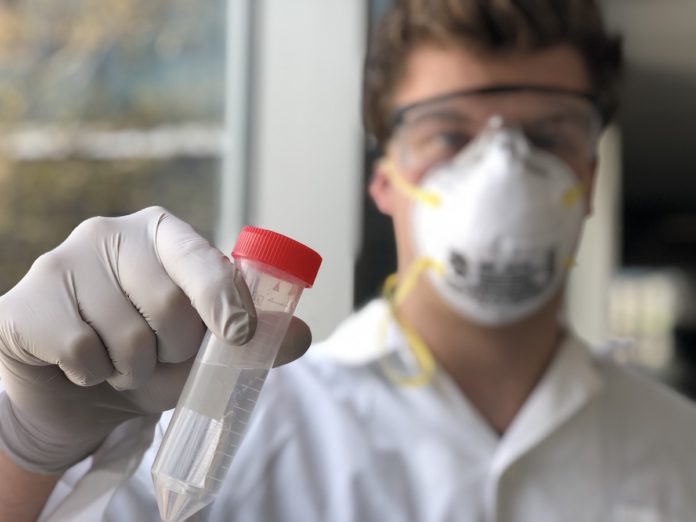The University of Guelph and research company EnvisionSQ are teaming up to create a self-sterilizing, clear coating product to fight COVID-19.
In early May, Next Generation Manufacturing Canada announced $21 million in funding for companies developing medical equipment to combat COVID-19. NanoCleanSQ, the joint effort between the University of Guelph and EnvisionSQ, was among the projects selected to receive funding.
NanoCleanSQ uses adhesive nanotechnology to bond the coating to any material and is 99.99 per cent effective in killing bacteria and viruses. Once the coating is attached to a surface, it breaks down the membranes of pathogens and destroys the virus while its photocatalytic property — its ability to speed up chemical processes when exposed to light — provides an added self-sterilization effect.
The funding will allow EnvisionSQ to produce 1,000 litres of the product every week for 12 weeks.
The very small particles created with nanotechnology “allows you to do certain functionalities that a larger particle may not do,” explained Bill Van Heyst, an engineering professor at the University of Guelph who helped develop NanoCleanSQ.
“It’s important that you get the right size to match the size of the virus,” Heyst added.

“We knew our photocatalyst was able to kill bacteria, but we never did any of the testing. With COVID-19, we pivoted our research to do some bacterial tests with the photocatalyst,” Heyst said.
The testing found the photocatalyst is successful at keeping surfaces sanitized from viruses for days, months or even years, compared to a regular spray disinfectant which normally lasts only a few minutes or hours after application, according to EnvisionSQ’s website.
Heyst is currently working with two co-op students employed with EnvisionSQ at one of the university’s engineering labs while following physical distancing and practices outlined by the University of Guelph’s regulations for research continuity.
“It’s really good for our students to get into the world of research and see firsthand what our university is doing,” Heyst said.
Especially during the pandemic, Heyst added university and industry collaborations are important.
“The universities have the intellectual creativity to figure out what some of the solutions might be,” he said. “Industries have the connections to commercialize the product much more rapidly than universities.”

“We prefer something that is longer lasting in terms of bonding and is not water soluble, but given the immediate needs of the product in hospitals and long term care facilities, we can’t [make that change] right now,” Heyst said.
Heyst and his team are also currently testing the toxicity of NanoCleanSQ. In the future, the product could possibly be sprayed onto single-use items, such as latex gloves, to minimize waste.
“It could be an everyday product that is used on campus,” said Erminio Jacobelli, a biology student at the University of Guelph.
“We’re all in such tight spaces in lecture halls and the library,” said Lea Mascarenhas, another University of Guelph biology student. “The product would help eliminate the virus and help students feel safer.”
In the short term, Heyst said the team is working on increasing production and getting the product to commercial production lines.
Once it’s on the market, NanoCleanSQ could mitigate the spread of bacteria from high-risk surfaces such as public buses, daycares, pharmacy counters, and schools.
“It’s cool that our school is creating something that could change the world, especially during this pandemic,” Jacobelli said.
Featured image provided by EnvisionSQ.






